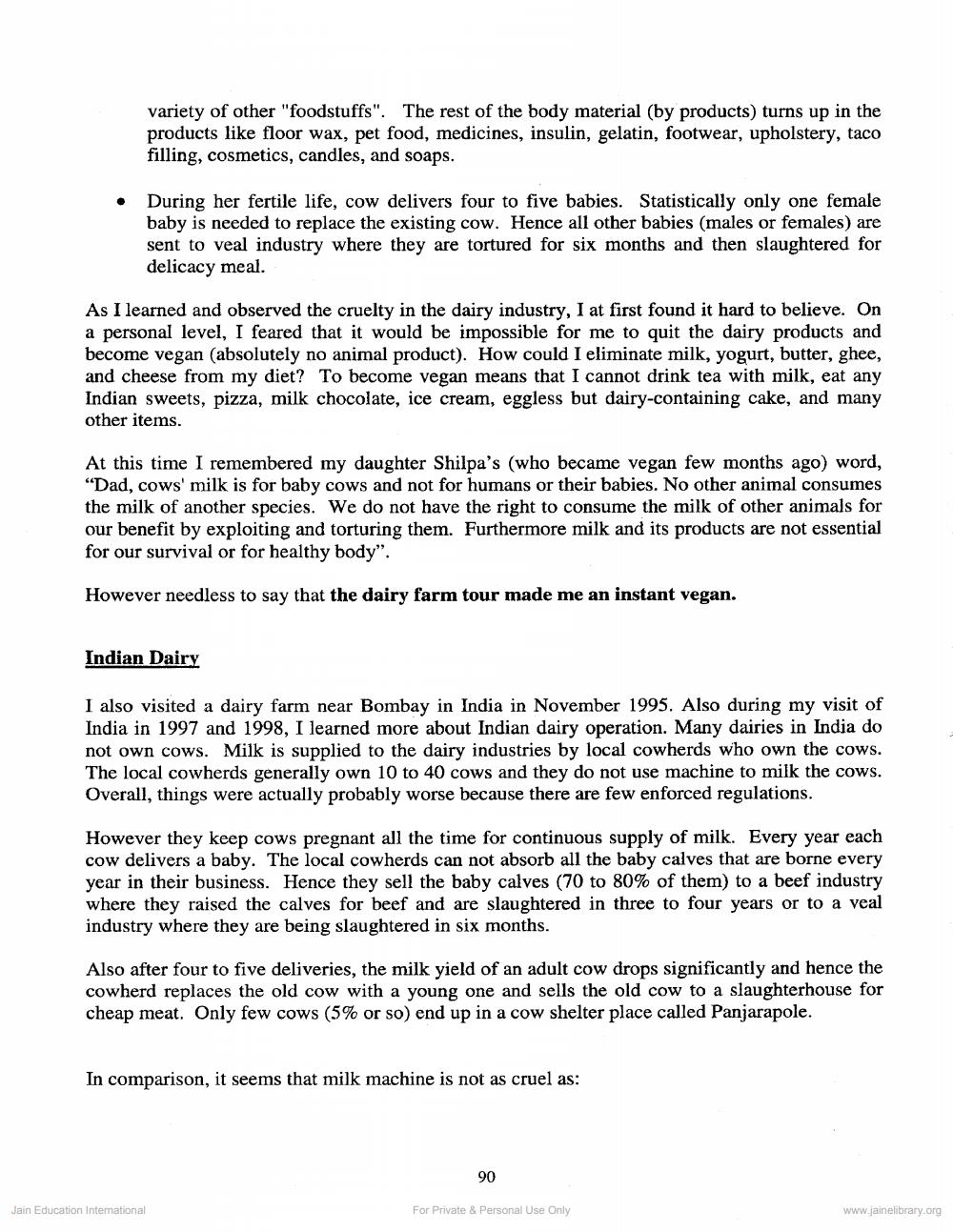________________
variety of other "foodstuffs". The rest of the body material (by products) turns up in the products like floor wax, pet food, medicines, insulin, gelatin, footwear, upholstery, taco filling, cosmetics, candles, and soaps.
During her fertile life, cow delivers four to five babies. Statistically only one female baby is needed to replace the existing cow. Hence all other babies (males or females) are sent to veal industry where they are tortured for six months and then slaughtered for delicacy meal.
As I learned and observed the cruelty in the dairy industry, I at first found it hard to believe. On a personal level, I feared that it would be impossible for me to quit the dairy products and become vegan (absolutely no animal product). How could I eliminate milk, yogurt, butter, ghee, and cheese from my diet? To become vegan means that I cannot drink tea with milk, eat any Indian sweets, pizza, milk chocolate, ice cream, eggless but dairy-containing cake, and many other items.
At this time I remembered my daughter Shilpa's (who became vegan few months ago) word, “Dad, cows' milk is for baby cows and not for humans or their babies. No other animal consumes the milk of another species. We do not have the right to consume the milk of other animals for our benefit by exploiting and torturing them. Furthermore milk and its products are not essential for our survival or for healthy body".
However needless to say that the dairy farm tour made me an instant vegan.
Indian Dairy
I also visited a dairy farm near Bombay in India in November 1995. Also during my visit of India in 1997 and 1998, I learned more about Indian dairy operation. Many dairies in India do not own cows. Milk is supplied to the dairy industries by local cowherds who own the cows. The local cowherds generally own 10 to 40 cows and they do not use machine to milk the cows. Overall, things were actually probably worse because there are few enforced regulations.
However they keep cows pregnant all the time for continuous supply of milk. Every year each cow delivers a baby. The local cowherds can not absorb all the baby calves that are borne every year in their business. Hence they sell the baby calves (70 to 80% of them) to a beef industry where they raised the calves for beef and are slaughtered in three to four years or to a veal industry where they are being slaughtered in six months.
Also after four to five deliveries, the milk yield of an adult cow drops significantly and hence the cowherd replaces the old cow with a young one and sells the old cow to a slaughterhouse for cheap meat. Only few cows (5% or so) end up in a cow shelter place called Panjarapole.
In comparison, it seems that milk machine is not as cruel as:
90
Jain Education Intemational
Jain Education Intermational
For Private & Personal Use Only
www.jainelibrary.org




